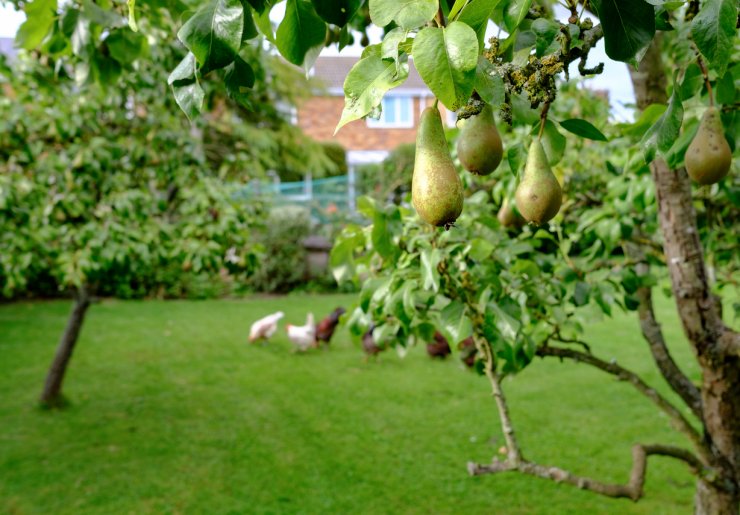
A small pear tree bearing fruit.
Pear trees do not reproduce true from seed and can’t be raised consistently from cuttings. Most commercial varieties of pear tree have two basic components: the rootstock and the scion. The rootstock controls the growth rate and size of the mature tree; the scion determines which cultivar the tree produces. Some rootstocks have a dwarfing effect; if you want to maximize your garden space, a dwarf variety is a good choice. Other rootstocks are resistant to different diseases. Look especially for varieties that are resistant to fire blight—that’s the nastiest disease that can afflict pear trees.
A full-size pear tree grafted on a standard rootstock can grow to a height of 30 feet and a width of 20 feet. Dwarf rootstocks can produce trees that are only 8 to 10 feet tall and wide. And to be clear, the category of dwarf tree refers only to the size of the tree; dwarf pear trees produce full-size fruit.
As you consider which varieties you’d like to grow, keep in mind that no matter how tall a given pear tree can grow, you are ultimately in control of just how big your tree gets. Planning and pruning will enable you to tailor your trees to your garden space.
Talk to the folks at your local extension center for tips on picking the perfect pear trees for your garden.
What size pear tree is right for your growing needs? And how many pear trees do you have? Please tell us in the comments below.


 Previous
Previous

